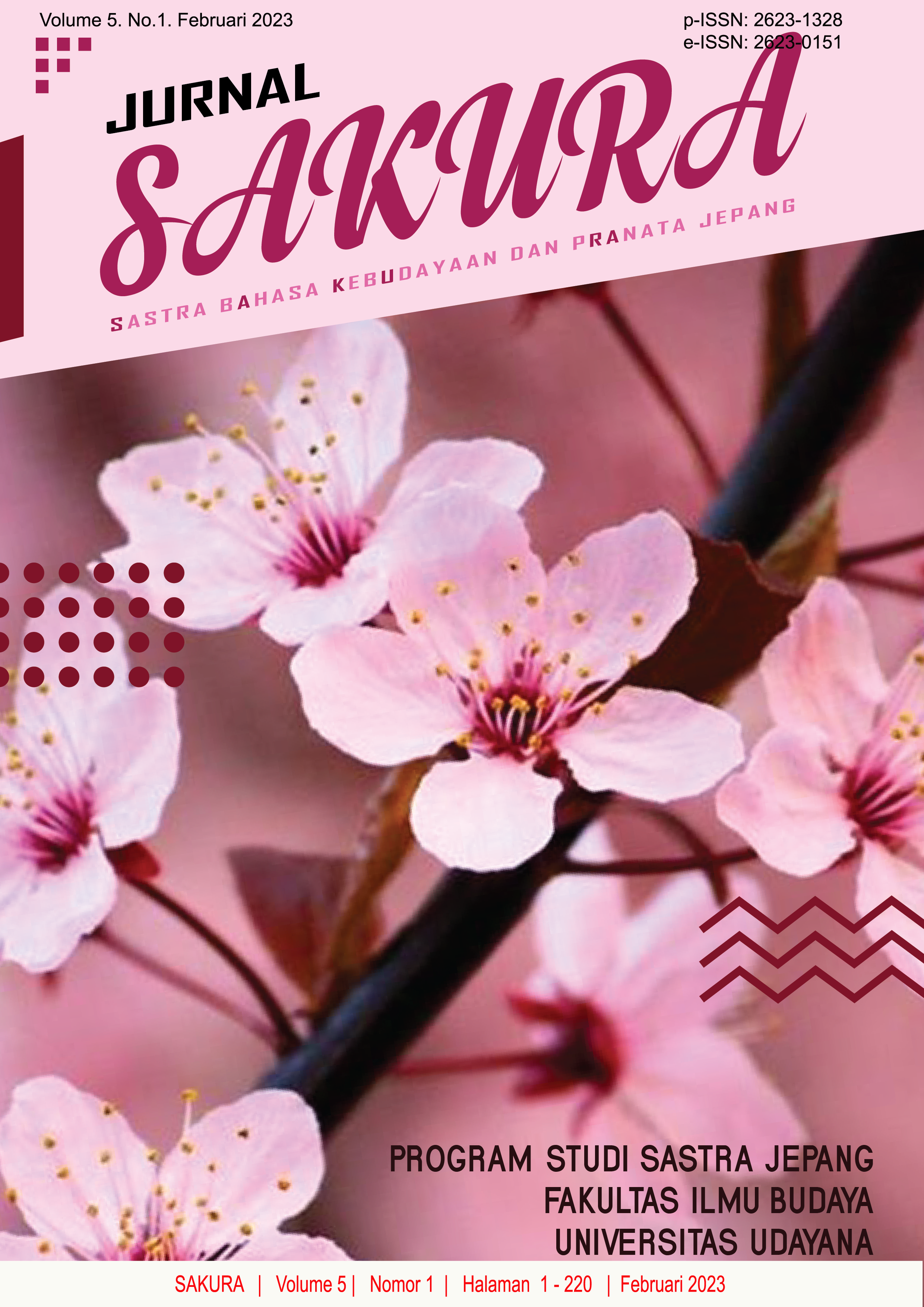Nilai-Nilai Estetika Zen pada Sushi di Wilayah Kansai
Abstract
This research aims to analyze the Zen aesthetic values contained in one of the traditional Japanese foods, sushi, especially sushi in the Kansai region. This research used descriptive qualitative method based on literature approach and documentation to collect relevant data. Theory used for this analysis is Zen aesthetic theory by Hisamatsu Shin'ichi. The conclusion of the analysis shows that sushi in the Kansai region, contains Zen aesthetic values in the characteristics of fukinsei (asymmetry), kokou (the essence of time), seijaku (tranquility) , yuugen (depth of meaning), shizen (naturalness), and Kansou (simplicity). These zen aesthetic values are contained in aspects of ingredients, cooking methods, serving methods, taste, and etiquette. The Japanese concepts found in this research are the concepts of moritsuke, ma, sasa giri, sugatamori, sugimori, chirashimori, hiramori, and goshiki.
Downloads
References
Aziz, M. H., Lusiana, Y., Hartati. (2019). “Omotenashi Dalam Wagashi”. Outlook Japan : Omotenashi As Japanese Culture, 7(2), hlm. 57-76.
Exacta, A. S., Anwar, S. D. (2013). “Wagashi : Representasi Nilai-Nilai Estetika Jepang”. FIB Universitas Indonesia.
Gillespie, C. (2001). European Gastronomy Into The 21st Century. Oxford: Elsevier.
Harrington, R. J. (2005). “Defining gastronomic identity”. Journal of Culinary Science and Technology, 4 (2/3), hlm. 129–152.
Hisamatsu, Shin’ichi. (1974). Zen and The Fine Arts. Tokyo: Kodansha International.
Ilhan I., Ucuk C. (2021). “Gastronomi Perspektifinden Estetik ve Yemek”. Aydin Gastronomy, 5(1), hlm. 35-44.
Lowry, Dave. (2005). The Connoisseur's Guide to Sushi: Everything You Need to Know About Sushi Varieties and Accompaniments, Etiquette and Dining Tips and More. Boston: Harvard Common Press
Lusiana, Y., Laksono, P. M., & Hariri, T. (2020). “Self-Styling, Popular Culture, and the Construction of Global-Local Identity among Japanese Food Lovers in Purwokerto”. I-Pop: International Journal of Indonesian Popular Culture and Communication, 1(1), hlm. 21–40.
Pratiwi, I.I. (2021). “Estetika Gastronomi Nusantara Dalam Media Digital”. Jurnal Budaya Nusantara, 4(2), hlm. 248-257.
Theng, Christianawati A., Santoso B. (2015). “Nilai Estetika dan Cita Rasa Makanan Dalam Penyajian Makizushi Musim Gugur Pada TV Champion Jepang”. FIB Universitas Dian Nuswantoro.
Vladimir, Cesar. (2017). What Is The Importance And Role Of Food In Modern Japanese Society. Thesis. University of Iceland.













